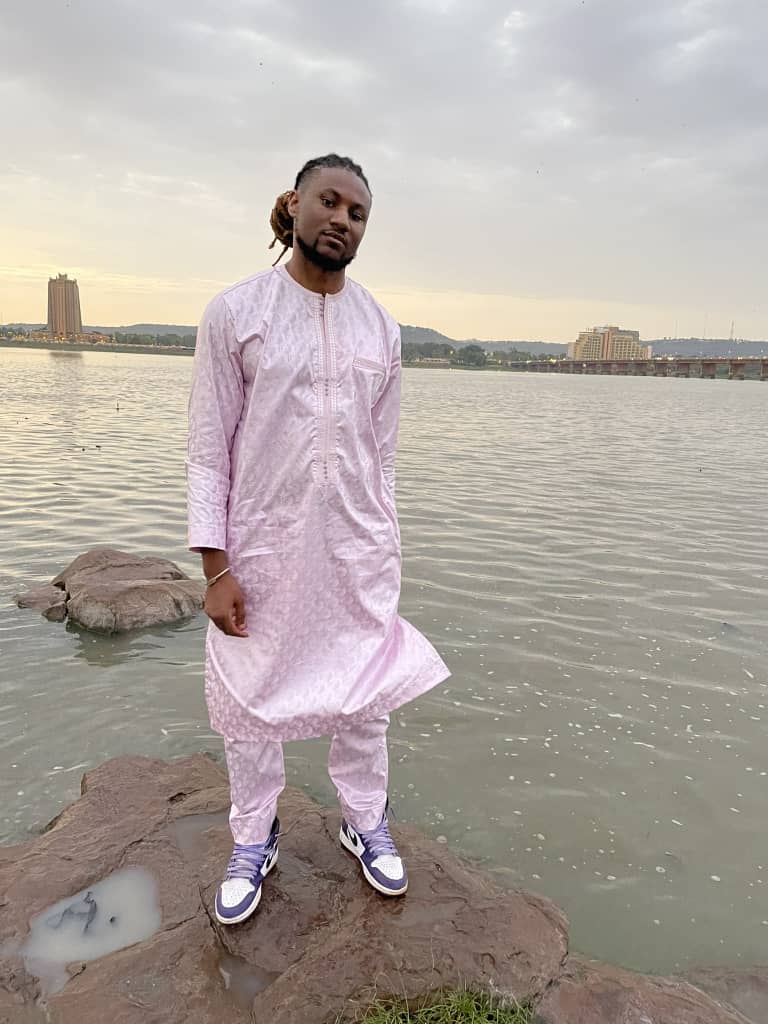Technology is playing a huge part in the African creative industry. Now, more than ever, Africans are leveraging digital media, with the Internet as an important tool, to reach global audiences…
By Sybil Fekurumoh
The journey began with pictures of Dogon hairstyles. As simple as the photographs were, they were headshots of young women styled in distinct, intricately-styled cornrows. The styles are peculiar to the Dogon women, an ethnic group in Mali. The hairdo was aesthetically accentuated with colourful white and yellow cowries, seashells, plastic beads, and gold trinkets. A hairstyle with cultural significance. I first saw these pictures on Twitter, and then across other social media platforms, through multiple accounts that shared uniquely African photographs. I daresay that these pictures have been saved multiple times by African women with kinky afros, to be shown to their hairstylists to replicate.
Technology is playing a huge part in the African creative industry. Now, more than ever, Africans are leveraging digital media, with the Internet as an important tool, to reach global audiences. Through digital platforms, African artists are redefining African arts and culture and sharing the continent’s unique and rich stories with the rest of the world. Art dissemination has changed, with the rise of social media platforms like Facebook, Instagram, and Twitter. African artists also utilise e-commerce platforms such as Afrikrea to promote their fashion products, art accessories, and handicrafts to a global audience. With the rising influence of Web3 and the metaverse, NFTs showcasing and promoting African arts and heritage are being explored by African creatives. The intention is to use digital media and the Internet to showcase and promote Africa’s rich and interesting cultural landscape.
A few weeks later, I stumbled on the source of the photographs: an Instagram account with the handle named @visualsbyponzio. Nybe Ponzio, a French-Malian photographer, manages visualsbyponzio. As his bio reads, he lets his creativity shine. Ponzio’s page could double as an art gallery, as he shares pictures of everyday life, and the beauty of Mali, with the rest of the world. As an African, the photographs evoke a sense of familiarity that I easily recognise. A set of photographs are pictures of Malians celebrating Eid in style. Children dressed in African textile outfits, in colourful children’s sunglasses, posed in front of a blue tie-and-dye backdrop. In another, women and children gathered in front of a beauty parlour, hair extensions hang on top of wooden platforms, some women are getting braids installed with hair extensions, and others are getting hand-painted in floral patterns with henna. The festive air is apparent in these photographs, I’m hauled into memories of Christmas time in December.

In an interview with Random Photo Journal, an excerpt which he also shares on his Instagram page, Ponzio describes himself as a social activist who, by documenting the cultural uniqueness of the Mali people, seeks “to inform, raise awareness and mental decolonisation that frees people’s mind from stereotypes and misconceptions.” That is, a medium to communicate the unheard voices and unseen faces of the Malian people to the global audience.
The media is awash with a certain kind of projection of Africa, usually of war-torn countries and poverty-stricken children. A quick search of Mali on Google brings up top stories on horrifying terrorist attacks, deaths, and peace-keeping movements. Through photography, Ponzio sheds Mali – and by large, Africa – in a different light. Ponzio shares photographs of the Sudano Sahelian architecture in Ségou, Mali, as well as a celebration when Tunisia lost to Mali at the African Cup of Nations in 2021. He also shares photographs of two boys frolicking at a waterfall and cultural masquerades of the Dogon people among others.
The journey segues to Senegal, where the visual artist, Lejardinjolof, photographs himself and others wearing traditional African masks. With over 19,000 followers on Instagram, Lejardinjolof celebrates these traditional masks, as a means of translating their meaning into modern times. Traditional masks have historically-significant meanings in cultural and religious practices. Most of their significance has been lost due to cultural drifts. In one photograph, Lejardinjolof is in a body of water, perhaps a beach, dressed in white, adorning a golden-brown mask with an elongated, trunk-like top. He quotes the French author, David Diop, in the image caption, “…that is your Africa springing up anew, springing up patiently, obstinately. Whose fruit bit by bit acquires the bitter taste of liberty…’’

Lejardinjolf, in a chat with Afrocritik, explains his use of African masks: “I try to reconnect with this ancestral Africa by collecting masks and travelling through them. A way to reconnect with the past, with the original traditions and cultures. So, perpetual research is made, and each mask that I acquire allows me to meet the various people of the continent. And I try to share with my brothers and sisters from all horizons, also, a way to invite everyone to more open-mindedness and respect.” In another picture, he is photographed in a raffia mat-like shawl, wearing a smiling face mask, in my opinion, one similar to the Dali mask, perhaps as a symbol of resistance. He reveals the kind of emotions he hopes to evoke with each photograph.
“The ideal for me is that each person describes their emotion as they feel it. Tradition, history, fashion, sociology, everyone has their own approach. And this is understandable because masks were not just used for funerals, or events related to death, which led some to demonise them. But actually, they were also used for happy events, as well as for entertainment. Their use was an instrument of social cohesion.”
While Lejardinjolf evokes emotions with masks, Derrick Ofosu Boateng does the same in colours. With almost 70,000 followers on Instagram, the Ghanaian visual artist creatively captures Ghana in both random and planned photographs. Boateng started out taking photographs with an iPhone in Accra and sharing them on social media. His works burst with colours, as he uses vibrant hues in many of his photographs. With bright and bold colours, Boateng arouses interest in the audience; he calls the viewer to the beauty of the people and culture of Ghana, by extension, Africa. A recurring element in these photographs is the display of fruits and flowers, possibly to suggest that his environment is a thriving one. Boateng’s works have been shared in exhibitions across the world.

Where these three artistes explore the present, the Nigerian Nostalgia Project brings the past to the present. The organisation intends to create a social and cultural identity for Nigerians by collecting digital images, sound, video recordings, and documents from both public and private sources with the goal “to promote thoughtful self-examination and a reconnection to Nigeria’s foundational ideals.” The Nigerian Nostalgia Project has created a community where individuals can connect with positive and fact-checked messages that impact the thought process of the viewers. The community has a website, a Facebook group page with over 80,000 members, and an Instagram page spanning over 16,000 followers. In the archives are old photos of Nigeria’s political and cultural history. There are photographs of outstanding writers in Nigeria’s history, such as Florence Nwapa and J.P Clark, and even a younger Stella Ameyo Adadevoh, the Nigerian endocrinologist who helped curb the spread of the Ebola virus in 2014. Another interesting picture is the front page of The Sunday Times newspaper on June 13, 1971, where the headline carries the controversies of Nobel Laureate, Wole Soyinka’s book, Kongi’s Harvest, which was adapted to film in 1970.
African stories are, in most cases, misrepresented and exploited, especially through colonial lenses. This is why works like Ponzio, Lejardinjolof, Boateng and the Nigerian Nostalgia Project are important. Creatives can take advantage of the global reach that digital media affords to communicate Africa’s beauty, culture, and heritage by Africans to Africans and the rest of the world.
Sybil Fekurumoh is a creative writer who writes for Afrocritik. Connect with her on Twitter and Instagram at @toqueensaber.



